

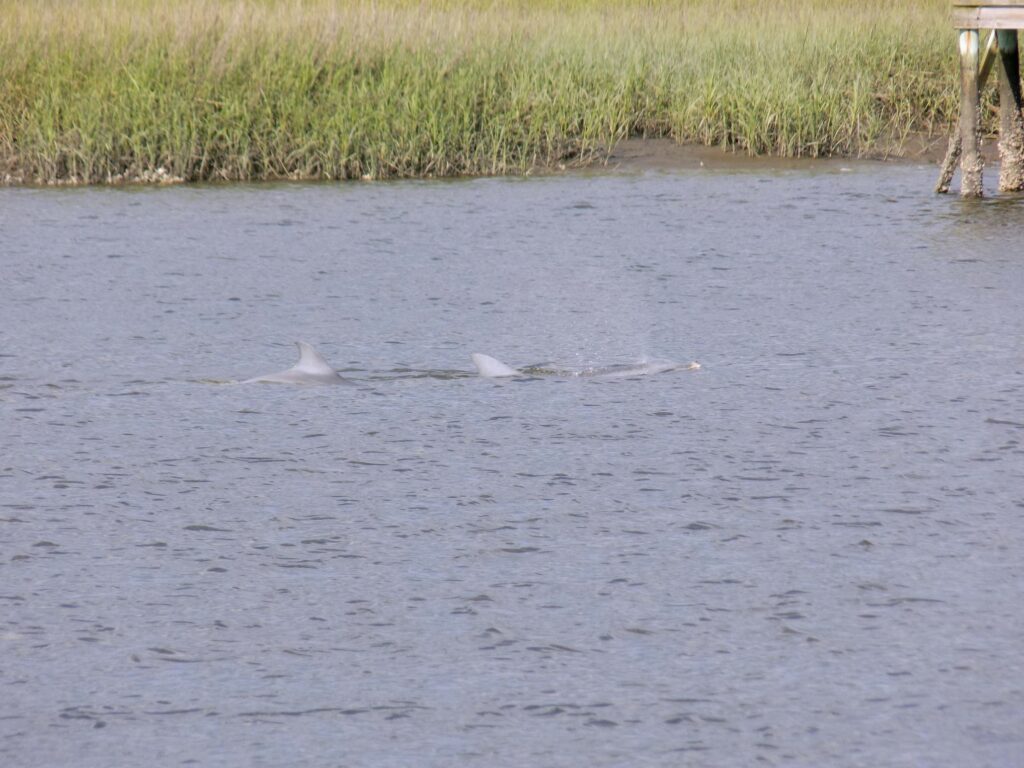

This week for Flora and Fauna Friday, we’ve got the second most intelligent species on Earth. This week we’re focusing on the Atlantic Bottlenose Dolphin (Tursiops truncatus). I’ll be the first to tell you that I’m not a marine biologist, it’s just not my thing. However, the Bottlenose Dolphin is such a ubiquitously loved and inarguably fascinating creature that I can’t avoid talking about it.
Bottlenose Dolphins are a species of marine mammal found throughout the temperate oceans of the globe that belong to the family Delphinidae, or the Oceanic Dolphins. Dolphins are a clade of Toothed Whale and are closely related but separate from Porpoises. Interestingly whales of all kinds, collectively known as Cetaceans, belong to the order Artiodactyla, which is the same order that includes Deer, Cattle, Antelopes, and Hippopotamuses. In fact, the Hippo is the closest living land ancestor of all whales.
Dolphins have a sleek streamlined appearance and glossy gray skin, like polished gunmetal blushed below with pink. Their mouth is “beaked”, narrow and distinct from the head, which lends them the common name of “Bottlenose” Dolphin, as their head resembles the shape of a bottle. Dolphins, like most Cetaceans, have nostrils on top of their skulls, called blowholes. These allow them to breath more conveniently while swimming at the surface of the water. Bottlenose Dolphins are usually 7 to 10 feet in length and can live to be over 50 years old. Their front legs have become fin-like, their rear limbs vanished, and their tail has grown a crescent shaped fluke on the end. Unlike fish and reptiles, who swim side to side, Dolphins swim with their tail by undulating their spinal column up and down. Dolphins are carnivorous and feed on fish, crustaceans, squid, and mollusks. They use echolocation to locate food in the murky waters of the coast. This works very similar to the sonar used by naval vessels.
In the west Atlantic, we have distinct populations of Bottlenose Dolphins, chiefly the inshore and offshore populations. The inshore populations are what we see around the Island and are generally smaller, have larger fins, and are more sedentary. On Edisto small pods are a common sight and sound throughout the coastal waterways, breaching with an exhalative sigh in sequence as they commute with the tide. The soft spitting of Oysters split by the explosive flop of a lone male fish-whacking beneath the bluff. Here in the Lowcountry, the Bottlenose Dolphins practice a unique feeding strategy called “strand feeding” seen nowhere else in the world. A pod of Dolphins will corral a school of fish between themselves and the shore of a tidal creek. Then, in unison, the Dolphins will charge the school side by side, forcing the fish to jump or be thrown onto the bank. The Dolphins turn sideways and their momentum carries them onto the bank with the fish, where they snatch up the stranded snacks. This feeding strategy is not instinctual. It is inherited socially within the pods. It’s a cultural phenomenon! This capacity to learn, strategize, work as a team to accomplish mutually beneficial goals, and pass that information between generations is a testament to the intelligence of this species. They are arguably the second smartest species on the planet, surpassed only by ourselves, and exceeding the capabilities of the great apes in many respects.
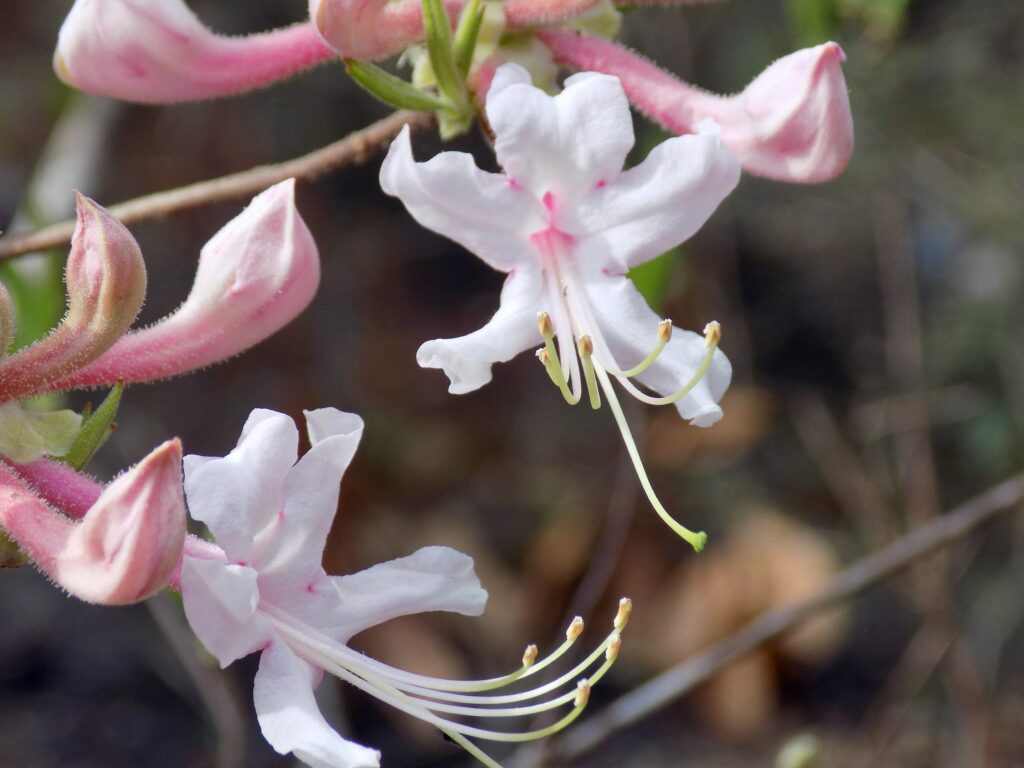


This week we have the pastel pink heralds of the Lowcountry spring, our native Azaleas (Rhododendron atlanticum, R. canescens, & R. viscosum).
We have three species of native Azalea found in the Lowcountry, Dwarf Azalea (R. atlanticum) Mountain Azalea (R. canescens), and Swamp Azalea (R. viscosum). Mountain Azalea is the most common species you’ll encounter on Edisto Island. Despite the common name, Mountain Azalea isn’t found in the mountains of South Carolina. It’s found below the fall line throughout the coastal plain and the same goes for the other two. All three species are open shrubs with simple alternate leaves and gnarled limbs. Azaleas bloom in late winter through spring. Their pink-white trumpet flowers burst forth from the darkness of the understory peppering the dreary winter woods with the new life of spring. These floral horns trumpet the arrival of spring, style and stamens reaching into the crisp cool air. Azaleas, both native and exotic, rely on bees for their pollination. Bumblebees, Miner Bees, and Carpenter Bees provide the service in exchange for a sugary reward. Native Azaleas spread clonally through their roots and often form small thickets of twisted stems. Azaleas of all types belong to the Heath family, Ericaceae. The Heaths include the Azaleas, Mountain-laurels, Fetterbushes, Blueberries, and Huckleberries.

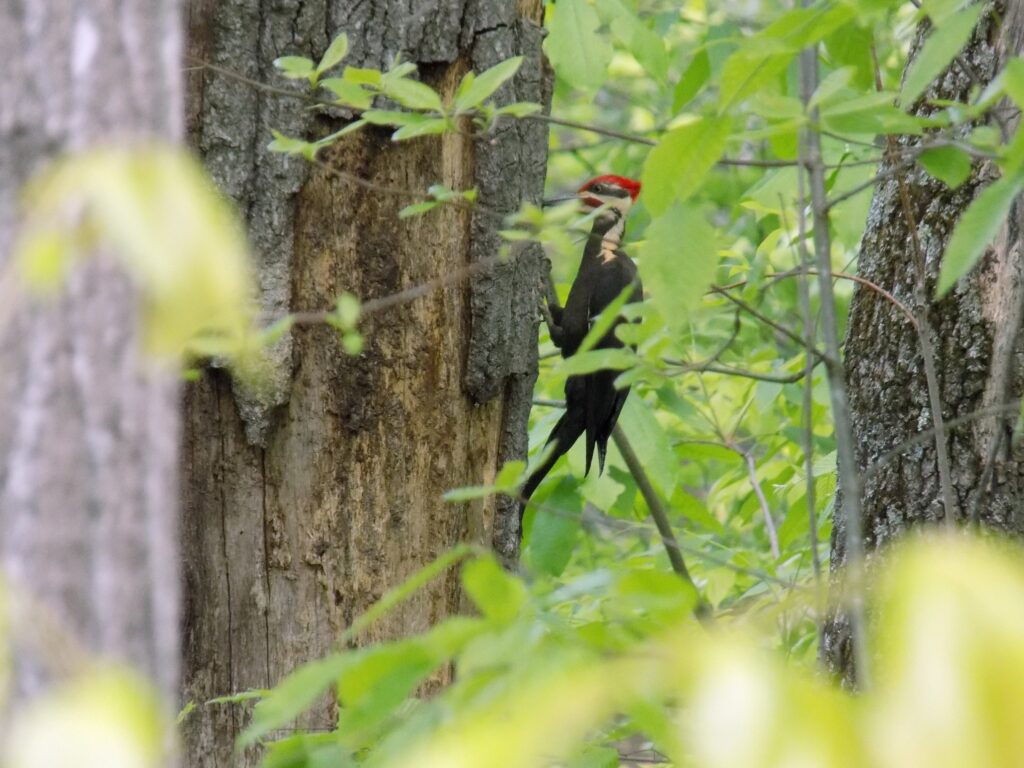
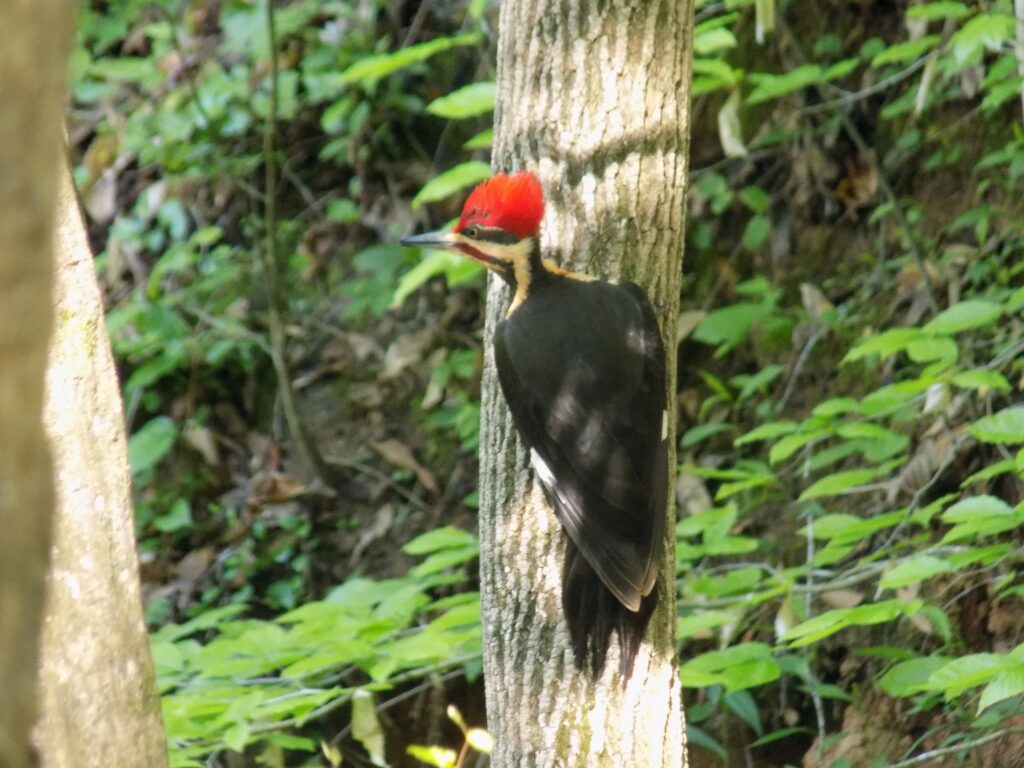
This week for Flora and Fauna Friday, we have the herald of eastern old growth forests, the Pileated Woodpecker (Dryocopus pileatus).
The Pileated Woodpecker is our largest species of Woodpecker and on average is 18 inches from tail to beak. Their call is an echoing string of frantic clucks, often issued in flight while moving between perches. Males will drum on hollow trees to mark their territory. He hammers his bill against a trunk dozens of times a second to proclaim his domain. The term pileated means capped and refers to the species’ slicked-back scarlet cowlick. Their faces and necks are marked with alternating bands of black and white. Males sport a bright red “moustache” as well. Pileated Woodpeckers wear a matte black coat-tailed jacket of feathers across the body. These “coat-tails” are specialized stiffened tail feathers that act as a kickstand, allowing Woodpeckers to lean against them while climbing. Woodpeckers, along with Parrots, have zygodactylous feet. This means both of their outside toes point backwards, providing a more stable grasp while climbing or gripping.
Pileated Woodpeckers feed on insects that live in dead wood, particularly beetle and ant larvae. They have a habit of excavating huge rectangular cavities in rotten snags as they search for snacks. Unlike other woodpeckers, they can often be seen feeding close to the bases of trees and along fallen logs. They will also eat fruits and nuts when available. Pileated Woodpeckers require old growth forest habitats. They need a constant supply of large dead trees to hunt for insects in and to build nests in. Like other Woodpeckers, Pileated Woodpeckers are cavity nesters. They create deep holes in the hearts of snags and, being large, require large trees. These cavities can remain for decades and, after nesting ends, the cavities are used extensively by Squirrels, Rat Snakes, and Raccoons. They are especially critical nesting habitat for Wood Ducks. It’s important to protect these mature forests to preserve critical habitat for some of our larger and more specialized wildlife. The Ivory-billed Woodpecker, an even larger and more habitat specific Woodpecker, was once found extensively through the ancient old growth forests of the South. Due to unchecked logging across its range, the species was driven to extinction by the 1950s.

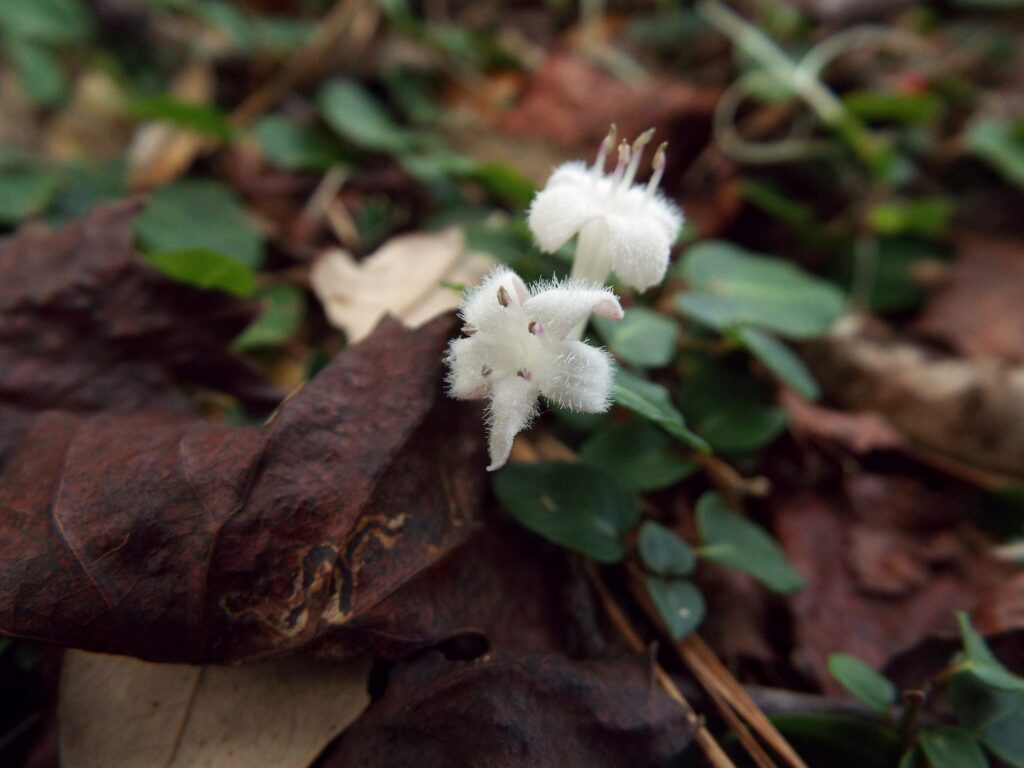

For Flora and Fauna Friday this week we have a low growing doubled-up wildflower, Partridge-Berry (Mitchella repens).
Partridge-Berry is a common wildflower in the woods of the eastern US. It grows in shaded forest understories. The plant is a ground cover that spreads clonally through creeping, prostrate stems. Partridge-Berry is perennial and evergreen. It’s simple, opposite leaves are small and deep blue-green. The interesting thing about Partridge-berry is its flowers and fruits. The flowers are small, white, trumpet-shaped, and sport four to five petals, each with a fuzzy surface. What’s unique about them is that they’re always borne in pairs. A twin inflorescence joined at the hip. Even more interesting is the use of an intriguing reproductive strategy in the species. Every Partridge-Berry plant has one of two flower types and every flower across the whole clonal colony will be that one type. The species possesses heteromorphic self-incompatibility and a Partridge-Berry plant will either be herkogamic or reverse-herkogamic. In lay-speak that means the plant will either have flowers with long pollen-bearing stamens and short pistils or conversely short stamens and long pistils. Plants of one flower-type can’t pollinate the same flower-type due to the positioning of the flower parts. The two flower-types interact with different body parts on the same pollinating insect. For example, a flower with short stamens will only deposit pollen on the proboscis of a butterfly. That proboscis will never touch the long pistil of that same flower-type. However, that proboscis can brush against and cross-pollinate the flowers of another plant with short pistils. It’s a unique strategy that forces plants to cross-pollinate with genetically different neighbors and promotes genetic diversity. Returning to the simple stuff, this two-flowered bloom results in an interesting fruit. As the ovaries of the twin flowers mature, they merge together to create a compound fruit with two flower scars. This bright red double-berry is an important food source to birds and small mammals. They’re also edible to humans. However, they are well and truly tasteless as the fruits are basically starch and water. Only the faintest vestiges of flavor are present.
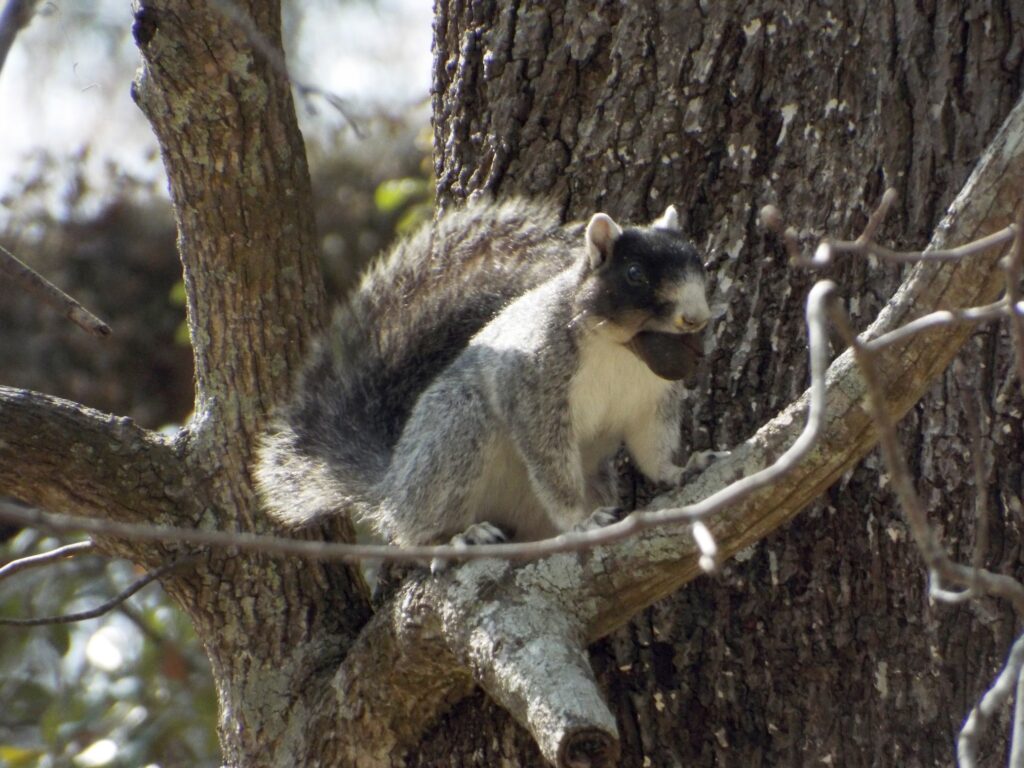
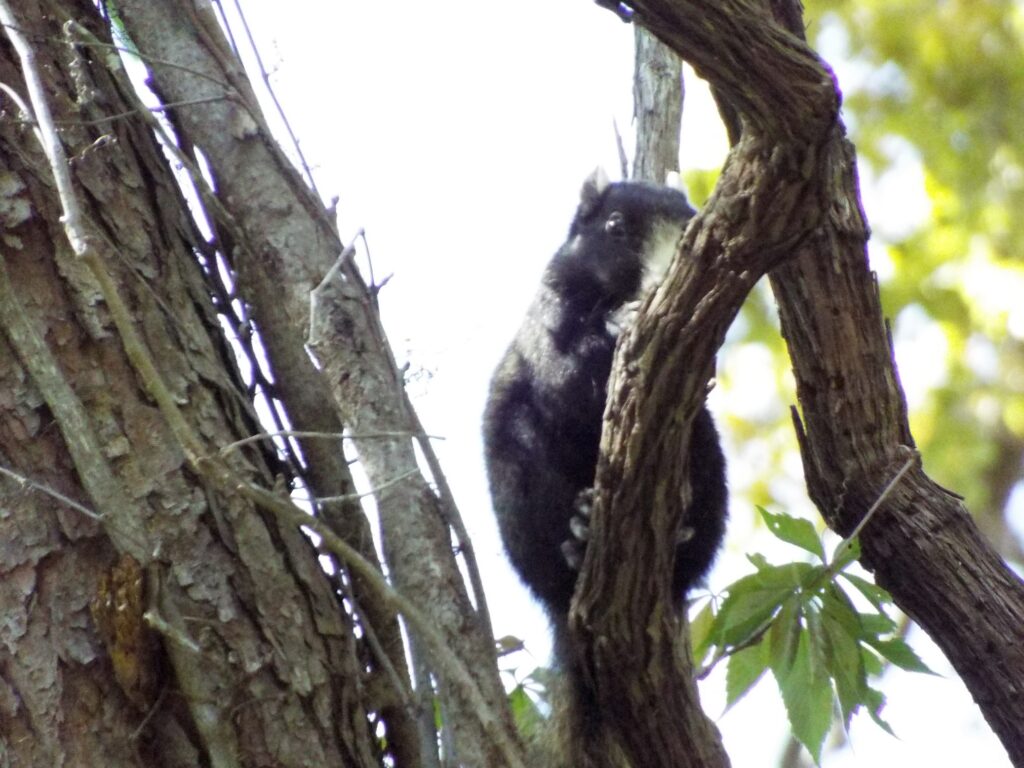
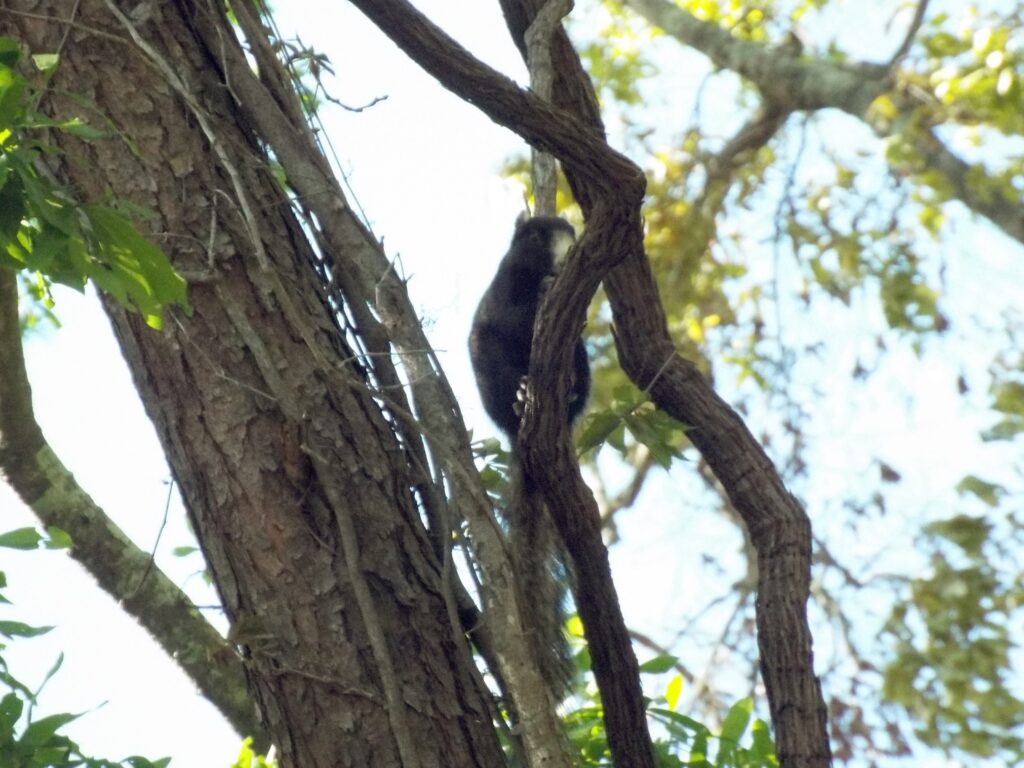
This week for Flora and Fauna Friday we have our largest arboreal rodent, the Southern Fox Squirrel (Sciurus niger niger).
Fox Squirrels are the largest species of tree squirrel in North America. They’re twice the size of your run of the mill Eastern Gray Squirrel, Sciurus carolinensis. (Although I’ve seen some pizza-stealing Gray Squirrels upstate that give them a run for their money.) In South Carolina se have a distinct Southern subspecies. Most are a salt-and-pepper gray on the back and tail with a black mask across the face and white ears, nose and belly. Fox Squirrels also come in a black morph that retains the white ears and nose and mottled tail but otherwise has a pure black coat. Fox Squirrels spend more time on the ground then most tree squirrels. Here they forage for food. Like most Squirrels, they subsist off of a diet of nuts, seeds, fruits, vegetation, mushrooms, insects, and the occasional skeleton. Fox Squirrels get their name from both their size and appearance. Both the red-morph of the north and gray-morph of the south, along with their bushy tails and considerable heft, resemble our native Gray Fox.
Fox Squirrels are found throughout the Eastern United States but are far more common up North. Here in the southeast, their far less common and in South Carolina they’re mostly restricted to the coastal plain. They’re mostly restricted to mature Pine forests, particularly savannas, but are also common in bottomland forests and the mixed hardwood-coniferous forests on barrier islands. Southern Fox Squirrels depend on prescribed fire for much of their habitat in South Carolina. Prescribed fire management mimics the natural burn cycles of the contiguous pine forests that historically made up the heart of the southeast. Their darkened gray-black fur camouflages them against the ashen ground and the fire knocks back vegetation, allowing them to forage more easily.
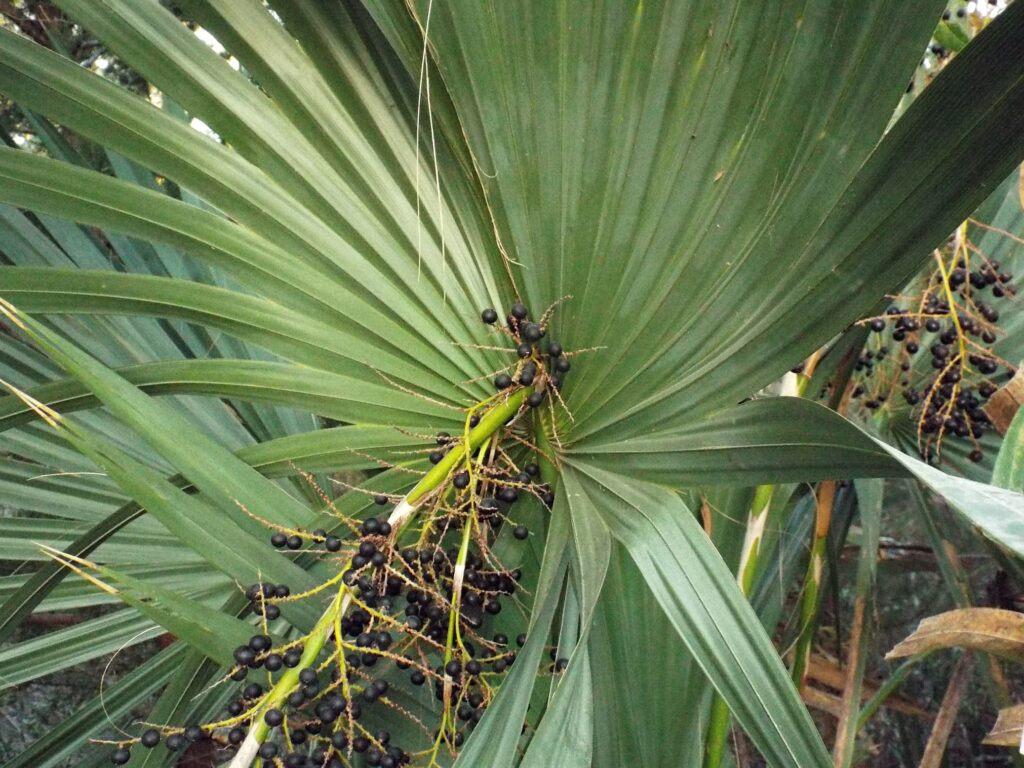
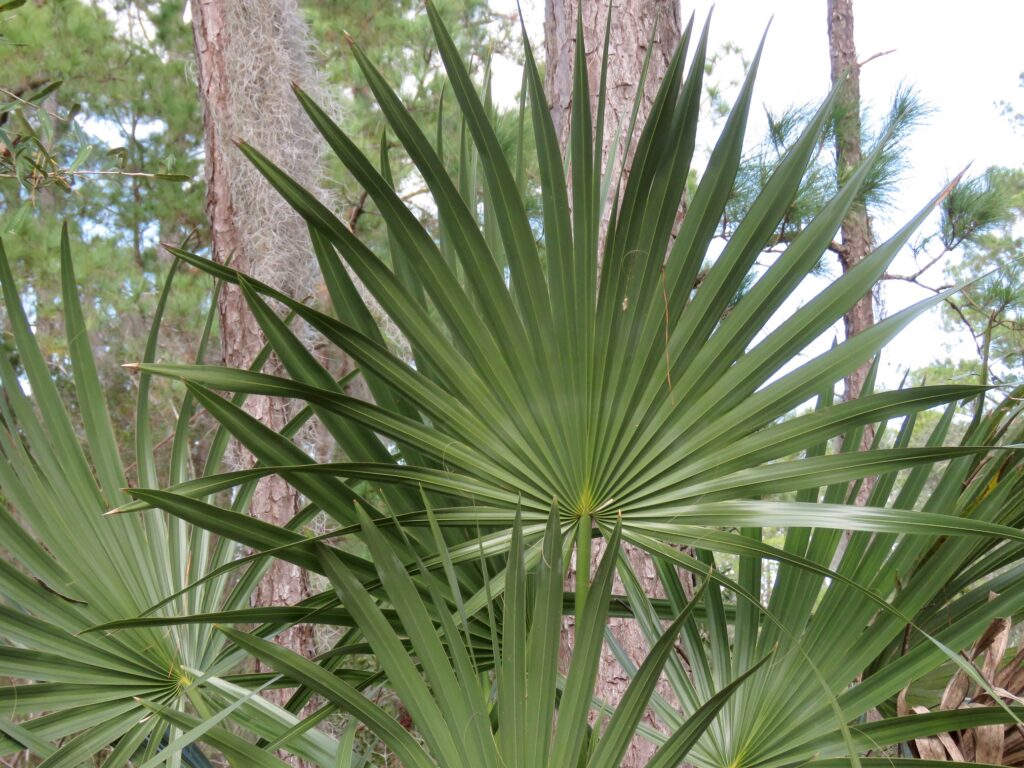


This week for Flora and Fauna Friday, we have our state tree to discuss. This week we’re talking about Palmettos, genus Sabal.
Here on Edisto Island we have two species of Palmetto, the Cabbage Palmetto (Sabal palmetto) and the Dwarf Palmetto (Sabal minor). The plant that’s on our state flag and found across our barrier islands, maritime forests, and parking lots is the more “tree-like” Cabbage Palmetto. A smaller species known as Dwarf Palmetto can also be found here in dense stands through the swamps and floodplain forests. This species rarely produces a visible stem. Young Cabbage Palmettos and full grown Dwarf Palmettos can often be hard to tell apart but there’s a simple trick to do so. The fresh fronds of Cabbage Palmettos produce strings between the segments of the leaf and Dwarf Palmettos do not. Additionally, Dwarf Palmettos are partial to forested wetlands and Cabbage Palmettos prefer barrier Islands and maritime forests. I’ll be talking about Cabbage Palmettos for the most part today.
Cabbage Palmetto is typically a small tree but can reach 30ft in height in ideal conditions. It has a straight fibrous trunk topped with a spherical crown of fronds. Each frond is a single leaf with a divided, circular, fan-like blade. The blade of the frond is connected to the trunk by a woody petiole that forks at the base. As the frond ages and is senesced, the blade breaks off. This leaves behind the forked base, called a “boot.” These boots can stay attached to the trunk for decades or may be shed after only a few years. Our Palmettos flower in late spring, producing a massive flower stalk covered in hundreds of small, cream-white flowers that are irresistible to bees and wasps. Come summer, their fruits, small black drupes, mature and are devoured by Mockingbirds and Raccoons.
Palmettos, like other Palms, are not true trees. They are monocots, just like Grasses, Orchids, Sedges, Lilies, and Onions. As such, Palmettos cannot grow laterally, only vertically. A true tree, like a Pine or Oak, will grow both taller and wider over time and produce a stem made of dense wood. Palms can only grow taller and their stem is a dense column of fibers instead of wood. They also produce a tangled ball of thin roots beneath their trunk rather than the elaborate branching root system of a woody plant. This is because a Palmetto tree only has one massive bud at the top of the plant, from which all leaves are produced. The trunk, which grows one layer at a time, can only be as wide as that one bud. This bud is an edible vegetable called “heart of palm” or “swamp cabbage” but removing this bud will kill the entire tree. So I can’t recommend foraging for it. This peculiar biology of Palm trunks allows the Palmetto to store months’ worth of water inside itself and makes it practically immune to hurricane force winds. The fibrous logs of the Palmetto earned it its place on our state flag. During the Revolutionary War, Fort Moultrie on Sullivan’s Island was critical to the defense of Charleston Harbor. The Fort was able to survive bombardment from the British Navy because it was constructed of Palmetto logs and loose sand. Traditional wooden and tabby fortifications would shatter and crumble under the force. The fibrous logs flexed and absorbed the impacts of the cannonballs, like a natural Kevlar vest.
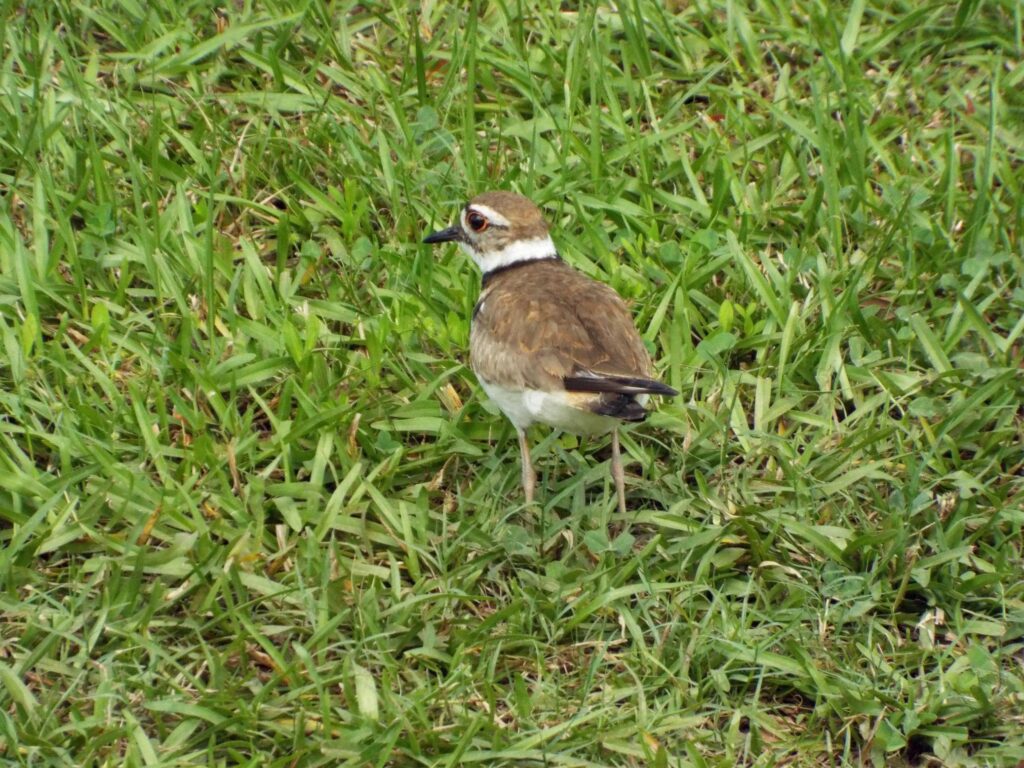
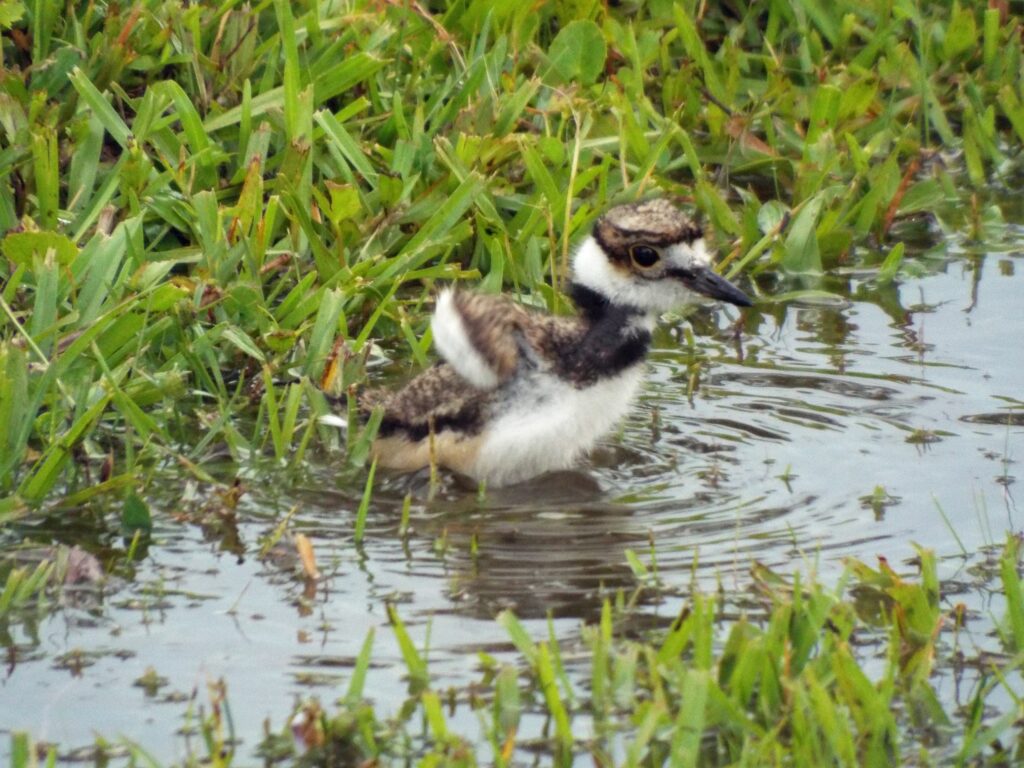
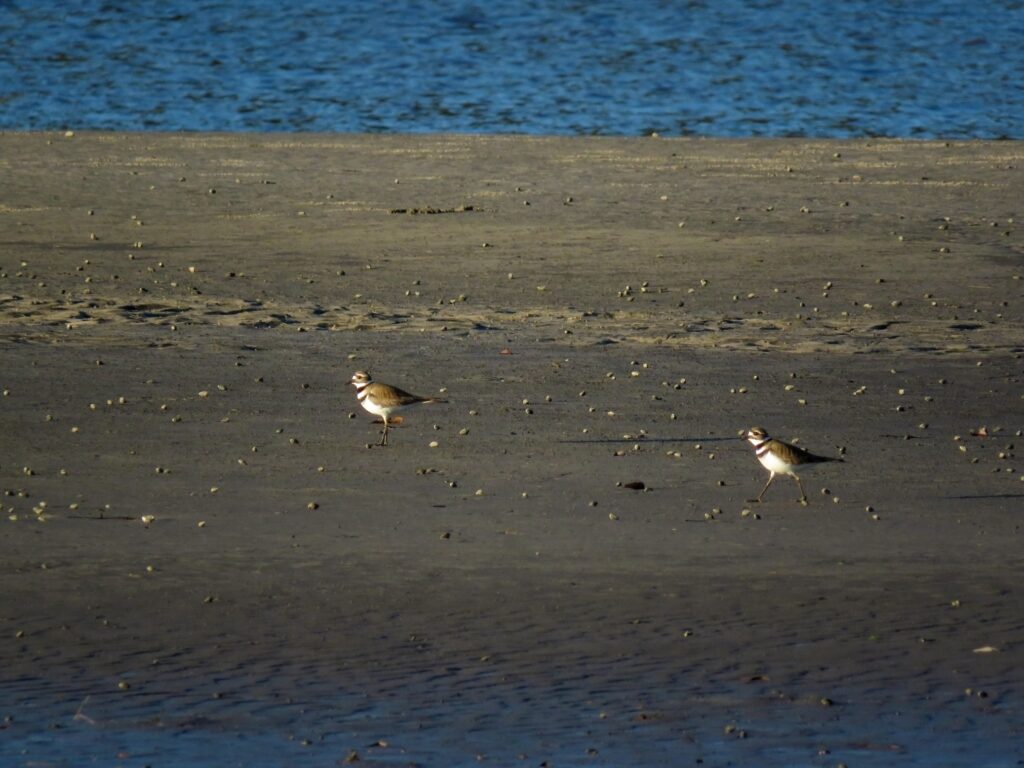
This week for Flora and Fauna Friday we have an onomatopoeia-ic shorebird who’s forsaken the shore in favor of green pastures, the Killdeer (Charadrius vociferus).
The Killdeer is a bird belonging to a group called the Shorebirds. This clade has experienced quite the taxonomic reorganization in recent years so I won’t get into confusing details. Just know that it includes our Sandpipers, Oystercatchers, Avocets, and Plovers. Members of this group are typically found on beaches and marshes. Killdeer are a species of Plover and our largest member of the “Banded” Plovers, genus Charadrius (but markedly smaller than the Grey Plovers, genus Pluvialis). They’re roughly the size of Mourning Doves and have long legs, a rusty-brown back, white belly, two heavy black bands across the chest, and big eyes ringed in red. They primarily eat invertebrates of all shapes and sizes. They get their curious common name from their call, a powerfully shrill, slurred “kill-deer.” A sound that should be as recognizable to the islander as the croaking “ca-ha” of the Fish Crow or the derisive guffaw of the Laughing Gull.
Like other Plovers, Killdeer can be found trotting along the beach, through the marsh, and over the mudflats. However, unlike our other Plovers, Killdeer are habitat generalists and aren’t restricted to the coast. They can be found in open habitat across the state and their staccato scooting can often be seen along lakeshores, farm fields, urban parks, and gravel parking lots. Killdeer are found year-round throughout all of South Carolina and breed across the entire United States. Killdeer nest on the ground in open areas, creating a small scrape to lay their eggs in. They’re partial to gravel lots and roofs but also nest on bare soil and short grass. Nesting out in the open has the advantage of giving the Killdeer total visibility of their surroundings, so they can detect all possible threats. When a predator is observed, Killdeer engage in a unique distraction display called the “broken wing act.” As the name suggests, the parent will move away from their nest and feign an injury, a broken wing to be precise. They will fan their orange tail feathers and frantically flail about on the ground. As the intruder approaches, the bird will string it along away from their chicks, pretending to be incapable of flight the entire time. Once they safely lead the threat away from their kids, they’ll burst off the ground and circle high in the air back around to far side of the clearing.

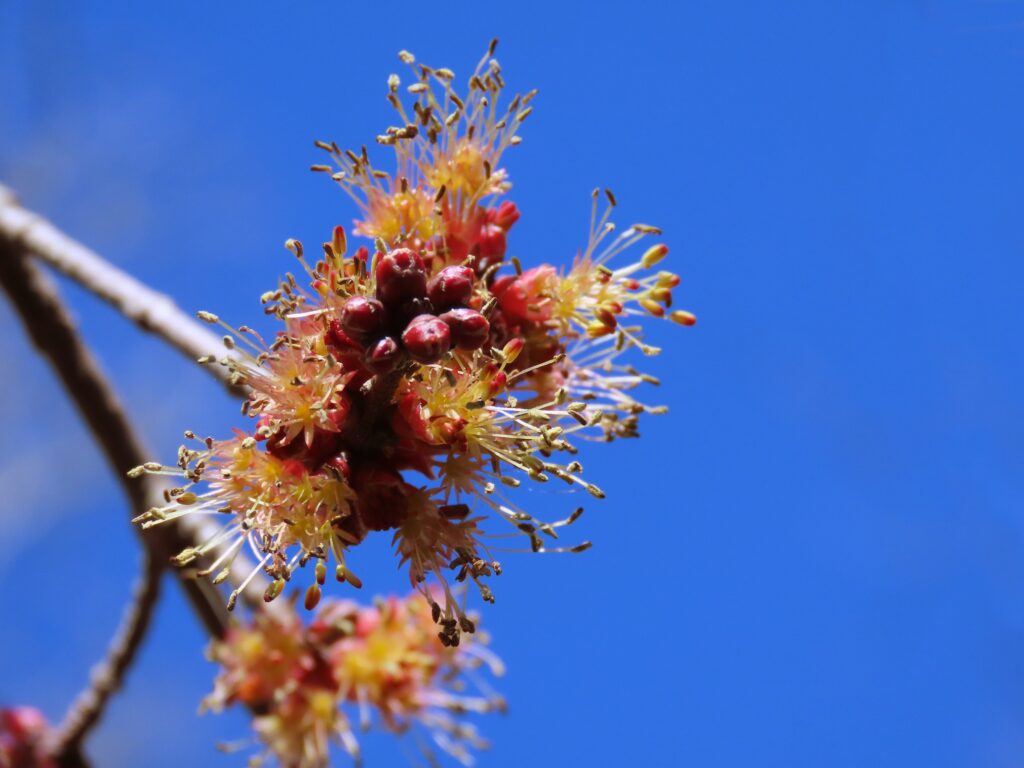
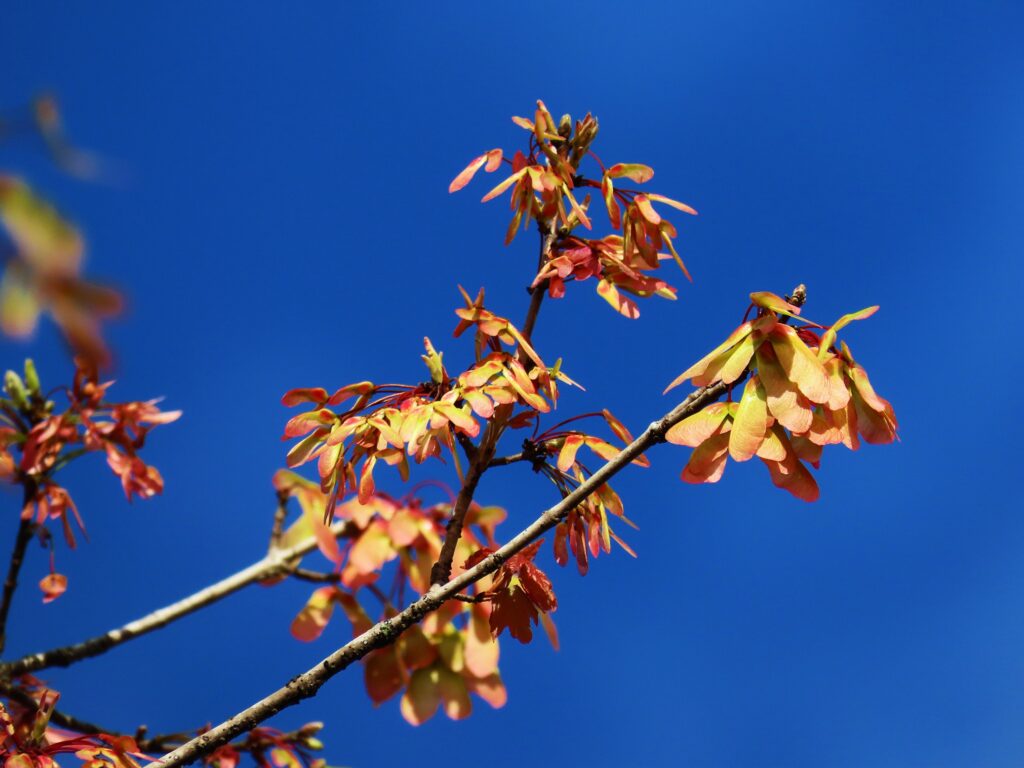
This week for Flora and Fauna Friday, we have a wetland tree that produces some of our first flowers of the new year. This week we’re taking a gander at Red Maple (Acer rubrum).
Red Maple is a common species of tree throughout the southeast. It’s a handsome plant with something for every season. In summer, its verdant green leaves, three or five-lobed and opposite each other, sway in the breeze. The smooth gray-white brindled trunk sucks water from the mucky soil of the wetland it anchors. Those leaves held limply on the limbs brew these murky waters into sugars. Red Maple is a close relative of the Northern Sugar Maple (Acer sacchraum) which is tapped in Canada for making maple syrup. With the onset of fall, the Red Maple produces its namesake display. The weather cools and the leaves redden. The once emerald foliage shifts to golden orange before settling on a scarlet that envelopes the entire crown. This presentation of pigment is only a byproduct of the plant’s built in sunscreen. This red is a mix of anthocyanins and carotenoids. These pigments protect the leaf from solar damage, absorbing the light wavelengths that chlorophyll doesn’t. Carotenoids are yellow and orange. Anthocyanins are red and purple. The leaves of Red Maples are high in both, producing a deep crimson color. During autumn, the tree breaks down chlorophyll and other cellular components in its leaves before dropping them. These pigments then become visible and more anthocyanins are pumped in to guard this botanical salvage operation. As the leaves age further, they dry and are shed. Through the first month of winter the marbled bark and bronzed twigs lay dormant. But in the depths of winter, their blooms break. A burst of soft red and pink erupts. A spray of color that captures the frosty dew. As these flowers fulfil their purpose, the fruits of their labors appear. A one-winged fruit born in pairs. A lime green head that bears a cresting rosy blade. These are samaras, specialized dry fruits built to spin as they fall. This graceful whirl allows the seeds to ride the wing as they float to the Earth. These seeds provide food for birds and rodents, both in the trees and on the ground.

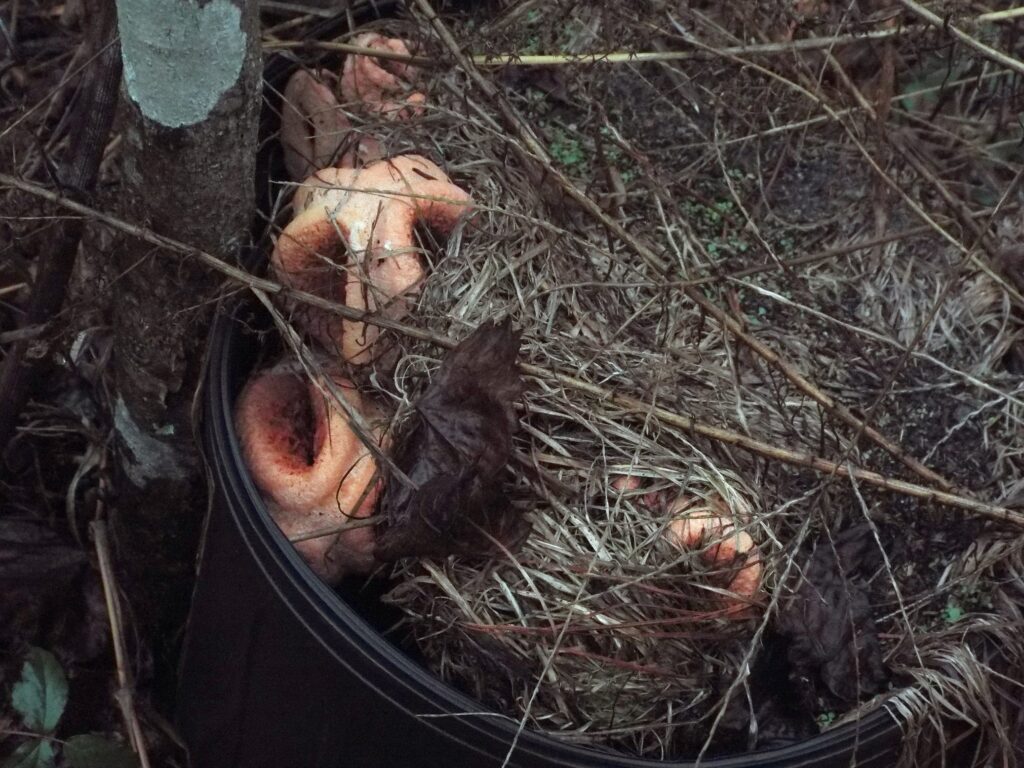
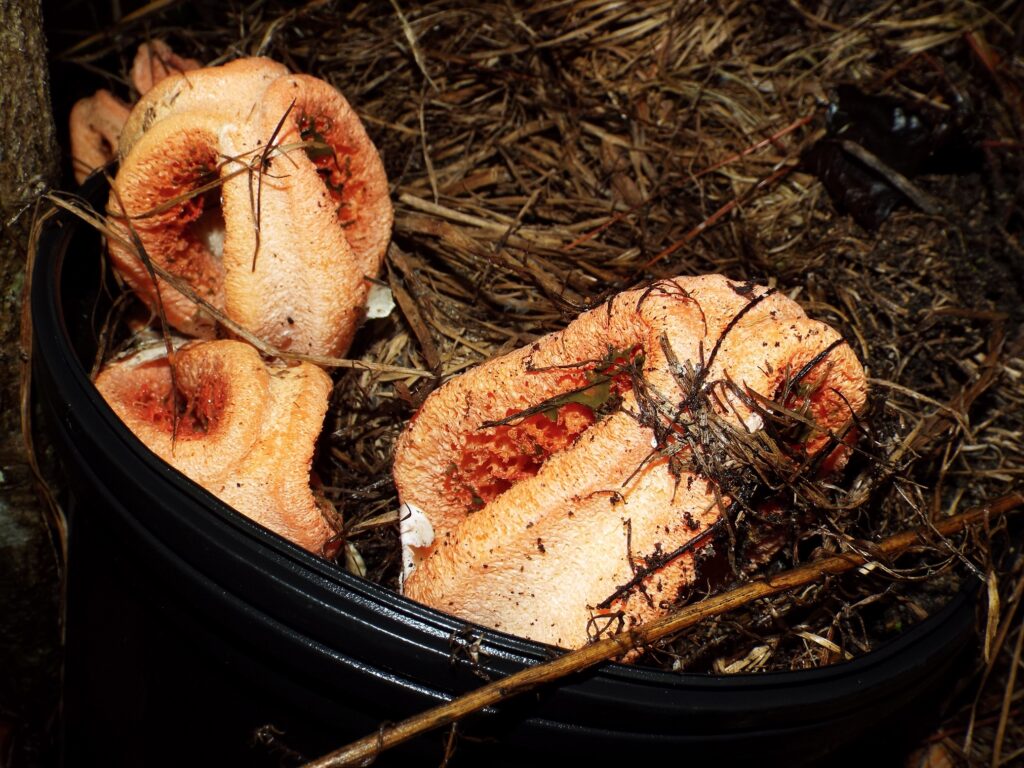

This week for Flora and Fauna Friday, we have a fragrant fungus found from fall to February, the Column Stinkhorn (Clathrus columnatus) also called Buzzard’s-Nose or what I refer to as “the stench of winter.”
Column Stinkhorn is a common fungus in gardens, yards, and fields. It’s a saprophytic species, meaning it feeds on dead organisms. Dead plants in the case of our stinkhorn. It is particularly fond of old mulch. The species is believed to be introduced to North America, as it tends to follow human developments as they spring up around the US. The part of the fungi you see is the fruiting bodies that we refer to as mushrooms. Mushrooms are a fungus’ version of a plant’s flowers. Except mushrooms yield spores instead of pollen or fruit. The main body of the fungus lies beneath the ground, spreading through the top soil. Like roots without a trunk.
Column Stinkhorn is a member of the Stinkhorn family, Phallaceae. Members of this family all share the traits of being saprophytic, smelling terrible, using insects to disperse spores, and producing a spongy mushroom. Members of this family produce mushrooms whose appearances range from unsettlingly demonic to geometrically elaborate to just plain vulgar.
The mushroom of the Column Stinkhorn is distinct, both in its appearance and its scent. Stinkhorns are one of many fungi that produce mushrooms shrouded in a structure called the universal veil. This is a thin white membrane that envelopes the mushroom as it develops. These immature mushrooms resemble clusters of eggs poking through the dirt at first. As the mushrooms mature, they split the veil and take their final shape. The remnants of the veil form a cup-like shape at the base called a volva. Column Stinkhorns produce three pink-orange columns joined at the top to create a three-legged arch. The flesh of this mushroom is spongy and porous. At the top, inside the arch, it exudes a green-brown slime that reeks of musky rotten flesh. This stink is not without a purpose though. Instead of driving all animals away, it draws the smallest ones in. This slime is sticky and filled with fungal spores. Spores are like a fungus’ microscopic seeds. The scent attracts flies and beetles looking for an animal carcass. As the insects clamber around our Stinkhorn, they become coated in this spore soaked slime. When they depart, they carry these spores with them. Potentially depositing them in the right habitats for our wee fungi.
This week for Flora and Fauna Friday, we have a genus of edible evergreen vines that’re every bit as stubborn as they are thorny. This week we’re talking about the Greenbriers, genus Smilax.
Greenbriers used to belong to the Lily family but have since been placed in their own, Smilacaceae. This is a group of plants that I’m sure all you gardeners and landscapers on the island are well acquainted with. There are eight common species in our area. All these common species share the traits of being woody vines with simple evergreen leaves. They climb with tendrils, grow starchy rhizomes, bear small clusters of pale-green flowers, and produce small dark berries. These berries are an important food source for birds in the winter months. Members of this genus were also an important food source for Native Americans. The new shoots in spring are edible raw and, I can tell you from firsthand experience, taste like a mix between asparagus and Japanese matcha tea. The young tubers are also edible when cooked and are full of starch.
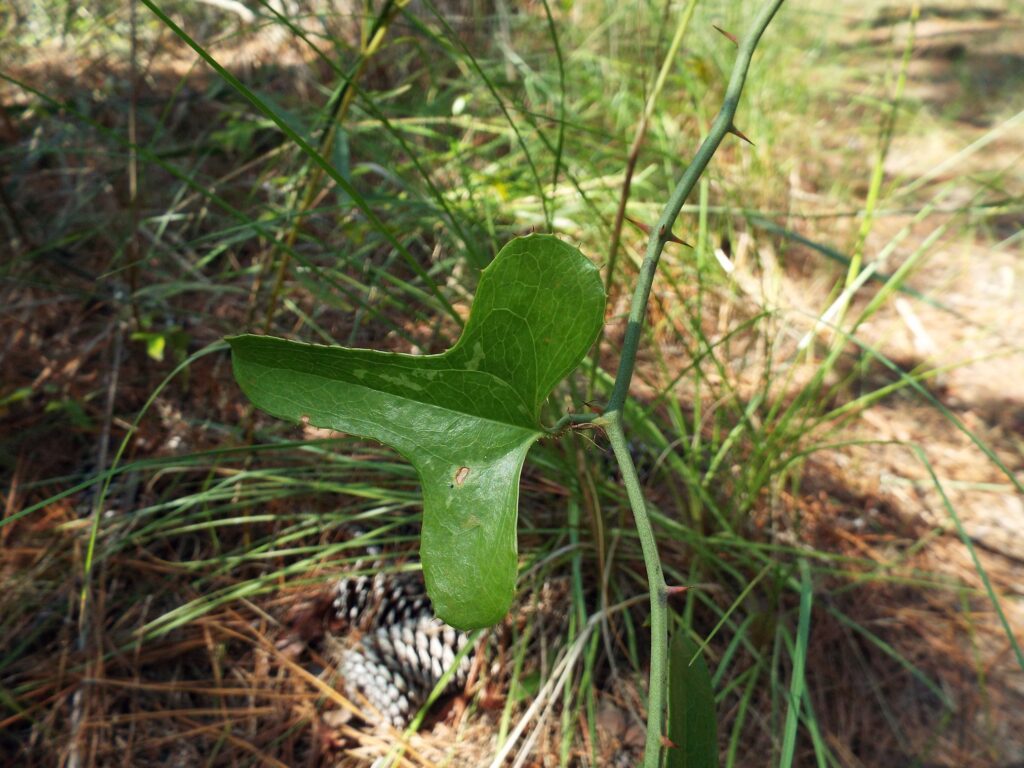
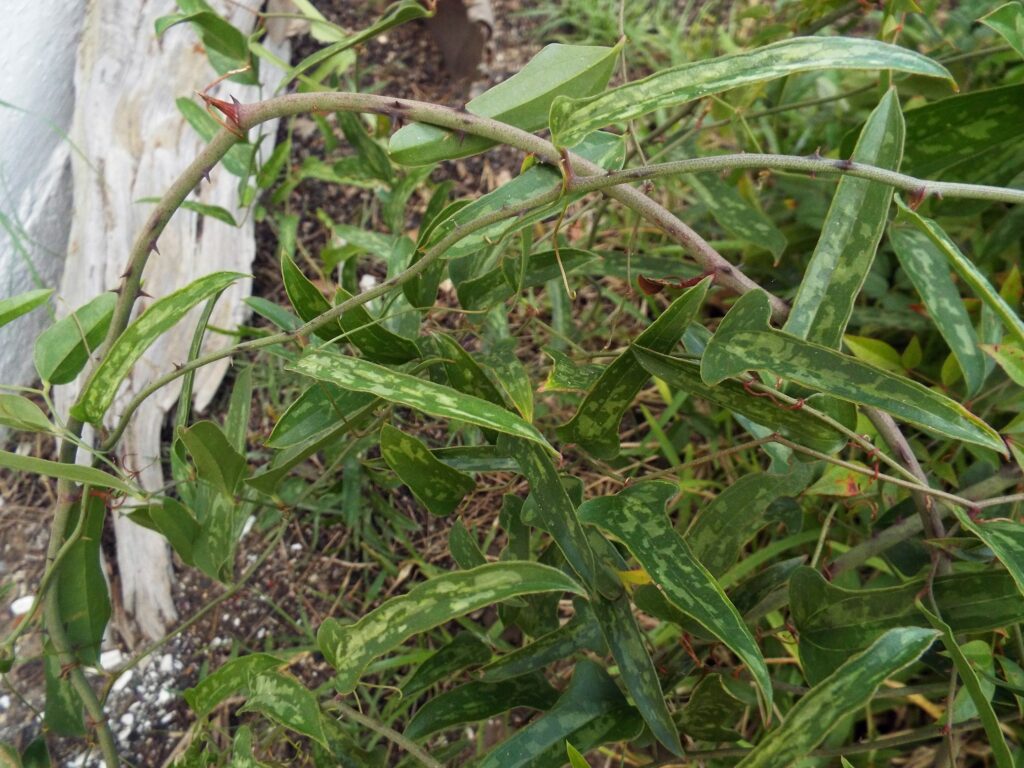
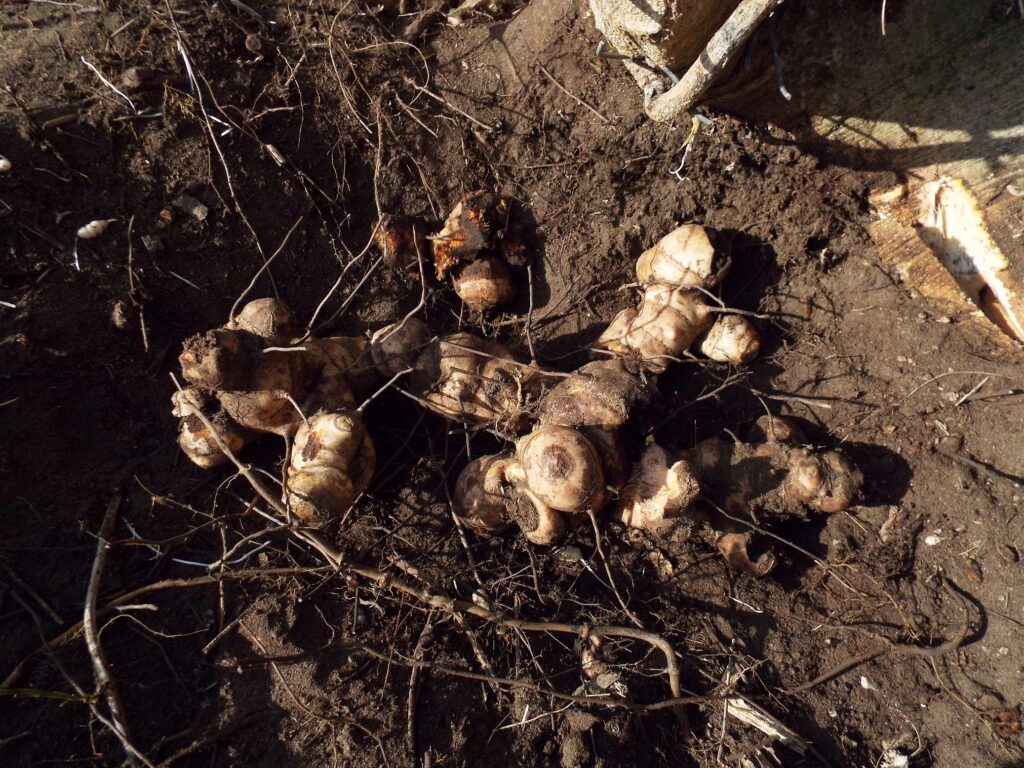
Sawtooth Greenbrier (Smilax bona-nox) is the most common species you’ll encounter inland. It’s also one of the easiest to identify. This species sports a signature margin of spines along the edge of its leaves. Its stem is encircled with stiff thorns up to half an inch long. These thorns protect the vine from girdling by deer and other herbivores. Sawtooth Greenbrier, and a few of the other species, produce a massive clump of branching rhizomes beneath the soil. These rhizome networks can reach several feet in diameter and weigh dozens of pounds. (The one pictured is a small section of a rhizome that filled a five-gallon bucket after I dug it up!) These rhizomes allow the plant to withstand drought conditions and, if need be, regenerate after it is cut or broken. I’ve seen shoots exceeding two inches in diameter at the base (imagine a thorny shovel handle) that came from rhizomes that might be over a hundred years old!

Another common inland species is Lanceleaf Greenbrier (Smilax smallii). Lanceleaf Greenbrier is the highest climbing species of Greenbrier in our area and can climb 40ft high into the tree canopy. It has shiny green, slightly triangular leaves and very few thorns on its stem. Laurel Greenbrier (Smilax laurifolia) is very similar to Lanceleaf Greenbriar in many respects but has thinner, more light-green leaves and prefers growing on top of bushes in sunny thickets or forest edges.
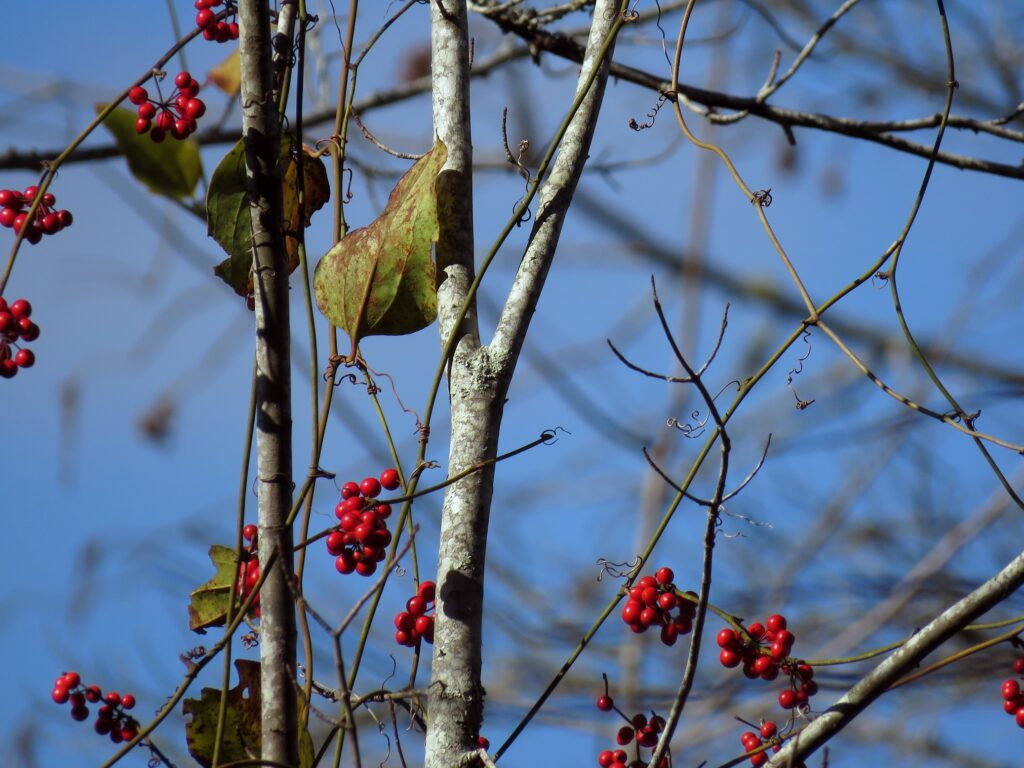
Coral Greenbrier (Smilax walteri), Roundleaf Greenbrier (Smilax rotundifolia), and Cat Greenbrier (Smilax glauca) are also common in wooded habitats. These species vary in their degree of thorniness and all possess large leaves but have berry colors distinct from one another. Coral Greenbrier is best identified by its preference for wetlands and brilliant red berries in winter. Roundleaf Greenbrier is characterized by its large, almost circular leaves when growing in shady habitats and dark, black-blue berries. Cat Greenbrier is similar to Roundleaf Greenbrier but layers a powdery blue-white veneer across its berries and the undersides of its leaves.

Earleaf Greenbrier (Smilax auriculata) is found most often in sandy soils near the coast or on sand dunes and hammock islands. Its leaves sport a pair of “ears” at the base that give them an arrowhead-like appearance. Earleaf Greenbrier, along with other dune species, help to protect the dunes from erosion by holding soil with its roots and trapping wind-blown sand. This species is just as savagely armed as Sawtooth Greenbrier and has a particularly tough stem.
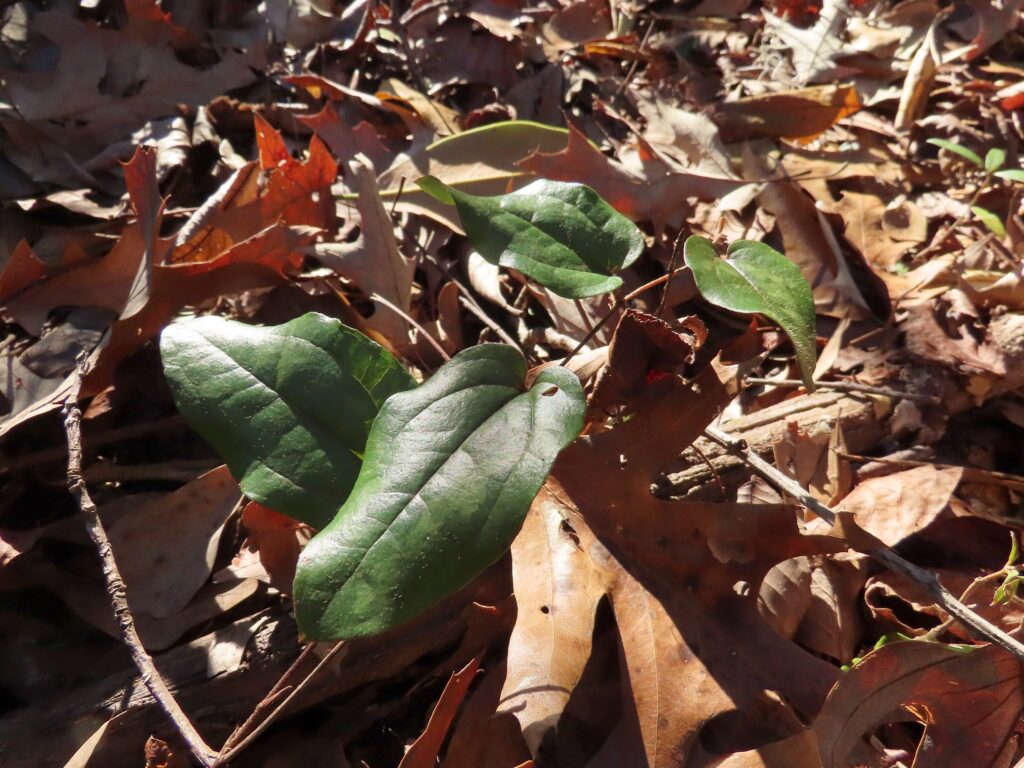
Sarsaparilla Vine (Smilax pumila) is unique from the other species I’ve talked about so far. It is small, thorn-less, grows low to the ground, and prefers to grow in shaded forest understories. This species, along with several others in the genus, are the plants that the root beer Sarsaparilla was traditionally made from. This species is best recognized by its wrinkly leaves with a rusty hue and a coat of fine hairs. Their spherical clusters of inconspicuous yellow flowers produce small, red, oblong berries.